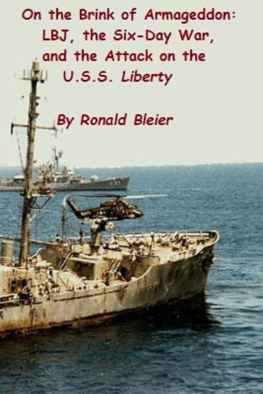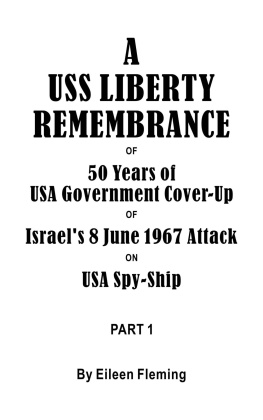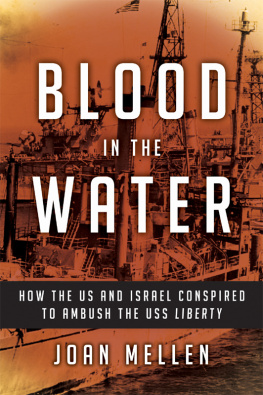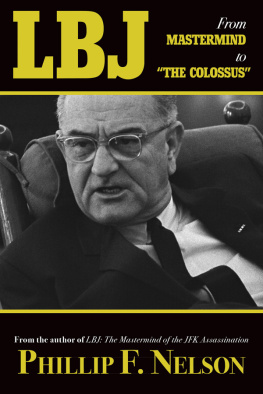On the Brink of Armageddon: LBJ, the Six-Day War, and the Attack on the U.S.S. Liberty
by Ronald Bleier
January 2019
Part I The Expos
Largely through the work of one researcher, BBC documentarian and author Peter Hounam, a disquieting revisionist theory has been abroad, opening windows onto the history of the 1967 Arab-Israel war (a/k/a, the Six-Day War) as well as on the Israeli attack on the U.S.S. Liberty, a spy ship. Hounam published his expos, Operation Cyanide : Why the Bombing of the USS Liberty Nearly Caused World War III in 2003, asserting that the U.S. and Israel colluded to provoke the war and to sink the Liberty in a false-flag attack, blaming it on Egypt. The sinking of the Liberty was to serve as President Johnson's pretext to publicly join Israel's war and to strike a Cold War blow against U.S.S.R. support for Israel's Arab neighbors.
Hounam's book revises our understanding of Israels otherwise inexplicable attack on its allys ship. Even more than a decade later, many, especially in the West, believe that Israels motivation for trying to sink the Liberty was to suppress its eavesdropping capabilities so as to outmaneuver U.S. objections to its planned attack on Syria the next day, the fifth day of the war. But Hounam reveals that besides the Liberty , the U.S. had alternate surveillance platforms monitoring the battlefield, making the Liberty 's intelligence collection essentially redundant when it came to controlling Israels military movements. Furthermore Hounam insists that the Israelis were aware of U.S. surveillance capabilities, and so had no discernible rationale for its attack.
Hounams revelation of President Johnsons crucial role in conceiving of the war itself and his plan to openly join Israels war via the attack on the Liberty , overturns the popular understanding that both were secret, independent Israeli initiatives. Hounam reprises previously unearthed testimony from an American whistleblower who played a significant operational role in the war. In addition, Hounam uncovers a second operative who details his operational involvement on Israels behalf. From these testimonies, and others, and the from the wealth of circumstantial evidence Hounam lays out, its clear that the war was the result of long-planned U.S.-Israeli collusion and thus must have been masterminded by President Johnson, who propelled it. Only President Johnson, in complete control of his governments military and diplomatic apparatus, had the motive, the means and the opportunity to plan such a war and execute the U.S.s role in it.
Fatefully it was also Johnsons decision to shield Israel from international pressure to withdraw from captured Arab territory, which opened the door to the ongoing tragedy of more than five decades of Israeli military rule over millions of Palestinians. President Lyndon Johnson thus may be seen as the father of all the terrible ramifications, especially for the Palestinians and for the U.S., of the Greater Israel that he made possible.
Hounam's subtitle, Why the Bombing of the USS Liberty Nearly Caused World War III, references the even more inconceivable element of his theory, namely that only the unanticipated survival of the Liberty prevented President Johnson from proceeding with his plan to initiate World War III by employing nuclear weaponry to attack Egypt.
***
The Attack on the U.S.S. Liberty
In the early afternoon of June 8, 1967, the fourth day of the Six-Day War, several off-duty crewmembers of the USS Liberty were on deck, enjoying the bright sun, and calm seas as the ship plied its slow, five-knot progress, to and fro, off the Egyptian coast, not far from the Gaza border. Although the Liberty was in a war zone without the military escort they had requested, crewmembers were reassured by sightings of the more than half-dozen Israeli overflights beginning in the early morning hours. There was no doubt in the minds of Liberty crewmembers that the Israelis had identified their ship as American.
Shortly before 2 p.m. local time, Israeli Mirage III jets appeared on the Liberty 's radar screen. Moments later, all hell broke loose and the Liberty was ferociously attacked with napalm canisters, 30 mm cannon and rockets aiming to take out the ship's bridge, the fore and aft gun mounts, and especially the Liberty 's antennae.
Israel's thirty-five minute air attack was followed by the arrival of Israeli torpedo boats (MTBs) which fired five torpedoes at the ship, the last one of which struck its target. That explosion was responsible for most of the Liberty 's 34 deaths and 171 injuries, a 70 percent casualty rate out of the 294 men aboard.
After the torpedo attack, Israeli gunboats shot at crewmembers who were dousing the fires. Contrary to international rules of engagement, the Israelis also shot up the Liberty 's lifeboats, some of which had already been deployed -- though none had yet been boarded, as Captain McGonagles order to abandon ship had fortunately been reversed.
Somehow the Liberty survived -- alone, defenseless -- initially cut off from communications, but it was an extremely close-run thing. The first piece of good fortune was that one of the Liberty 's forty-five antennae, which had been out of order and therefore didn't attract Israel's heat-sinking missiles, was repaired under fire within ten minutes. Soon, the Liberty s SOS reached the nearby Sixth Fleet, despite Israeli jamming of the Liberty 's radio channels by the attacking jets. Fortunately Liberty 's radiomen found that the blocked channels were momentarily open while the barrage of the jets' rockets was airborne.
Ordinarily, the torpedo that struck the Liberty should have been sufficient to sink it. But, by good fortune, the starboard side remained above the waterline since the ship listed on the side opposite the thirty-nine foot hole blown open by the torpedo. A second piece of luck was that the torpedo struck one of the ship's I-beams, allowing the interior bulkhead walls to remain intact, keeping seawater restricted to a few forward compartments. Had the seawater penetrated to the hot boilers, the resultant explosion would have sunk the ship within minutes.
Just as an approaching Israeli helicopter, packed with armed commandos, hove into the Liberty 's view, about to deliver the coup de grce , the attack was called off.
The unexpected survival of the Liberty left both the U.S. and the Israeli governments embarrassed. How was such an outrage to be explained? Once it was clear that the attack and the attacker could not be suppressed, the Israelis were soon forced to offer an official apology, claiming that they had attacked a U.S. ship in error. They contended that the Israeli high command believed they had been under threat from an Egyptian destroyer.
Although few, if any, senior members in either the U.S. or the Israeli governments believed that such an attack could have happened "in error," the U.S. quickly endorsed the Israeli explanation. To this day, both governments continue to maintain the official, friendly-fire narrative..
Liberty crewmembers who could testify that the Israeli attack was no mistake were silenced by the U.S. government's airtight gag order, which largely succeeded in squelching contrary information. They were admonished to refuse all interviews, and presumably to keep them from conferring on the attack, they were soon separated into various naval commands. The hasty and superficial U.S. investigation that immediately followed, conducted by the Navy Board of Inquiry, produced a predetermined whitewash. Similarly, official Israeli investigations into the incident supported the cover-up.
The strict blanket over the facts of the case was broken about a dozen years later when Jim M. Ennes, Jr., the ship's electronic materials officer, managed to publish his 1979 book, Assault on the Liberty , despite the gag order. His account left little doubt that Israel deliberately attacked a ship it knew to be that of its U.S. ally. His book almost singlehandedly succeeded in reviving "the conversation" about what really happened.
Next page










